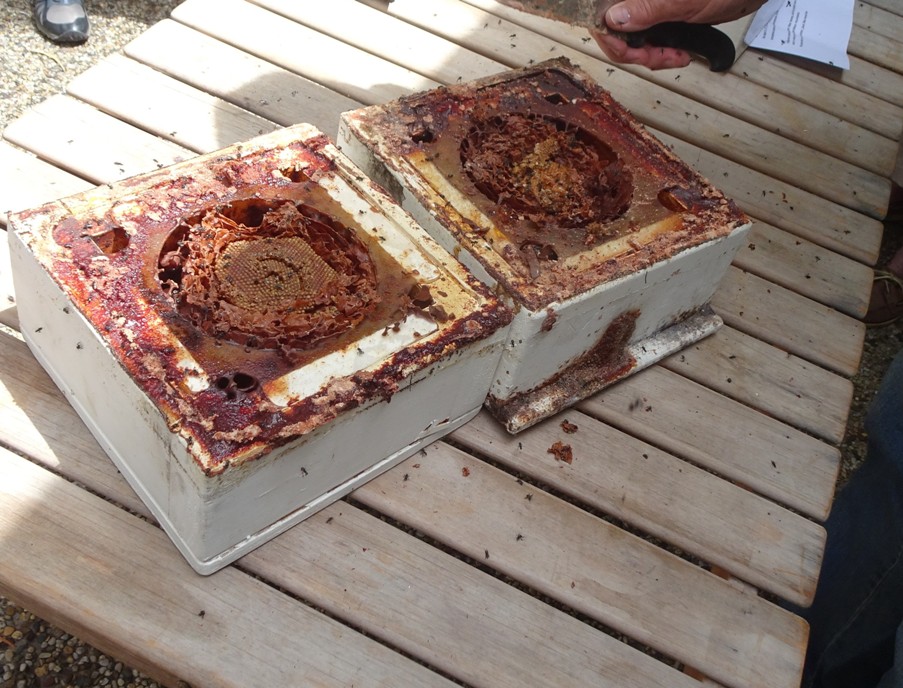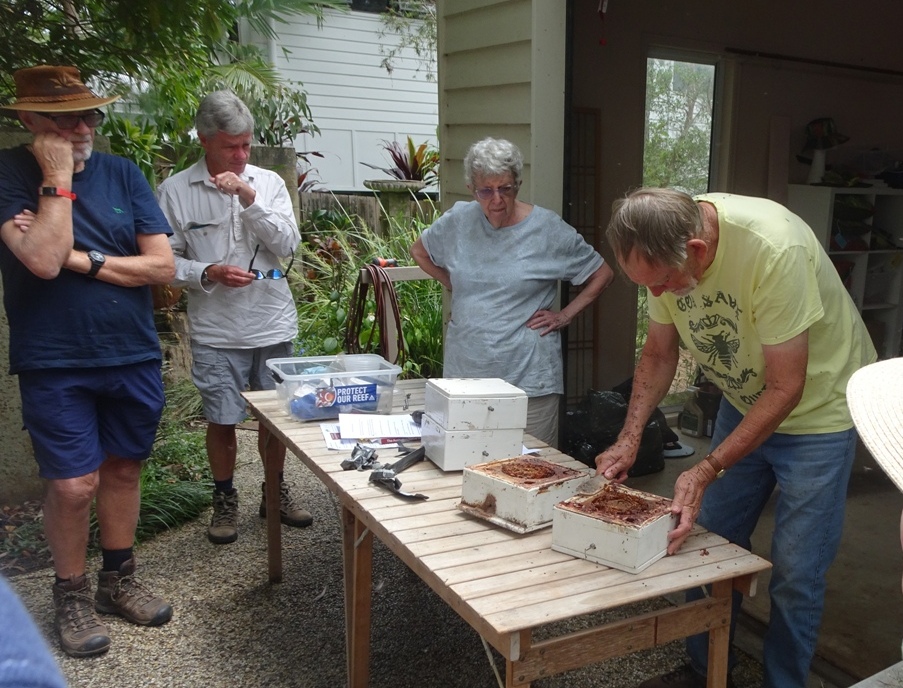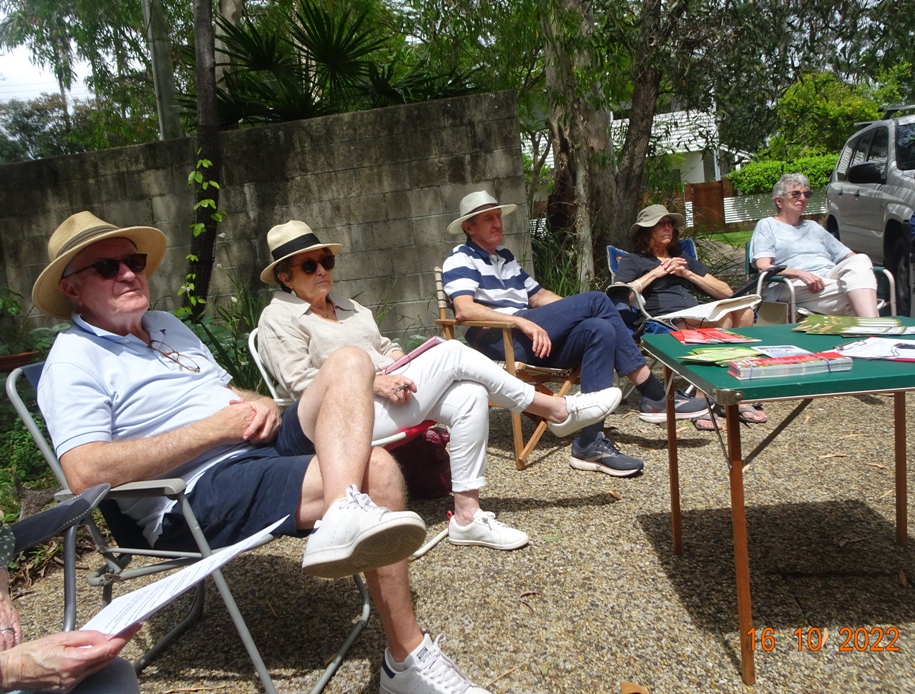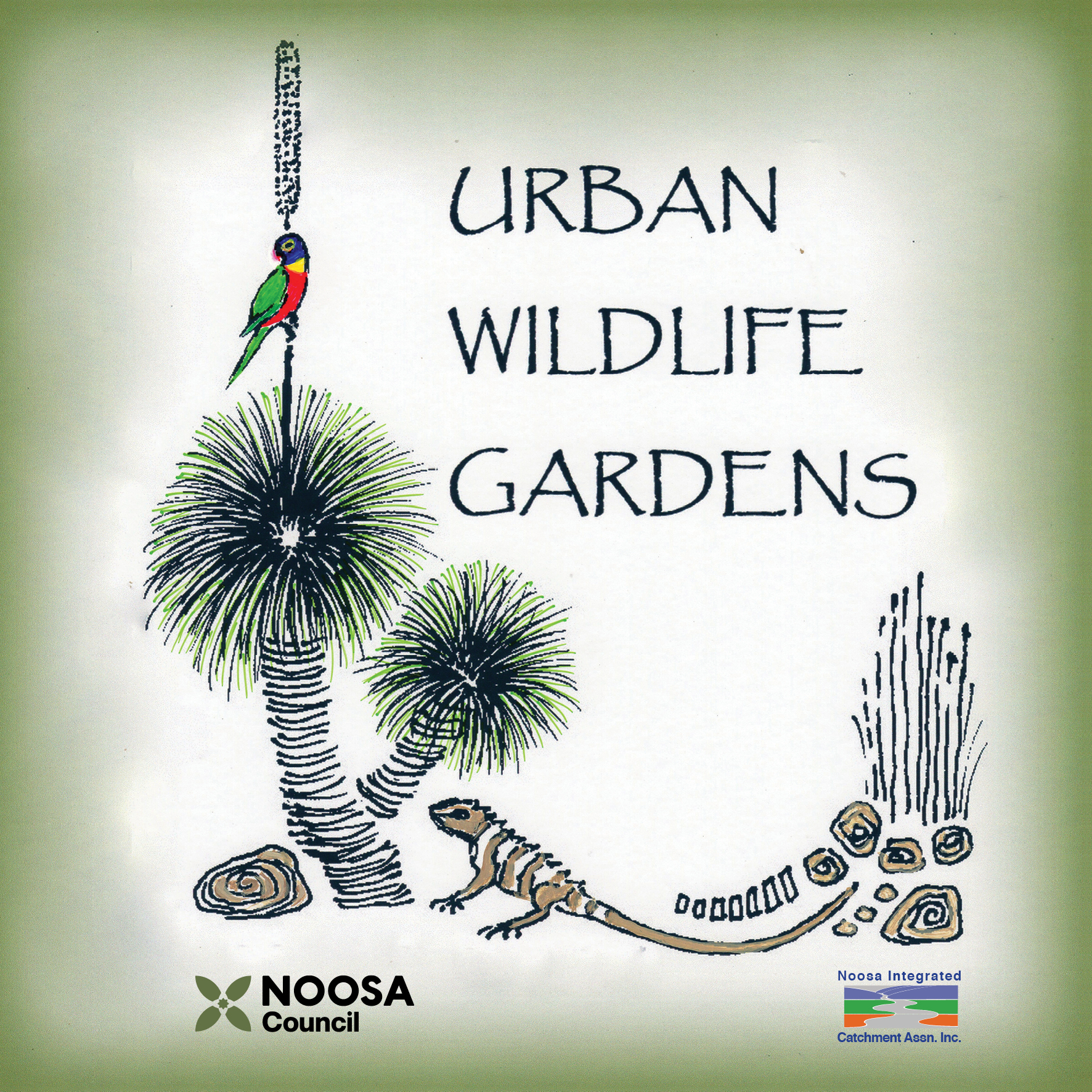An engaged group of Noosa’s Urban Wildlife Gardeners assembled in the Haslam Garden at Lake Cooroibah on Sunday 16th October to see a Native Bee hive separated and learn a few facts about Australia’s stingless native bees. The hive had been in place for nearly 2 years without being previously separated.
The importance of Native Bees as pollinators in native gardens is of course well understood, and having a native bee hive in your native garden is an easy and interesting thing to do.
The workshop, delivered by Bruce Hallett, provided an opportunity to watch the dividing process up close and learn a few facts. Depending how close you got it also provided an opportunity to engage with the bees who were a little put out by the experience. It can be attested that the bees didn’t sting and settled down remarkably quickly when the hive was reassembled.
The workshop also proved to be an opportunity to exchange experiences and ask informed questions about keeping stingless bees as several of the attendees already had their own hives. It was a pleasure to hear UWG members exchanging ideas and carrying on the discussion over morning tea.
Bruce referred frequently to the authoritative book ‘The Australian Native Bee Book’ by Tim Heard and references in the facts sheet below in this Newsletter were extracted by Bruce.
We expressed our thanks to Bruce for putting on the workshop, taking the time to assemble some interesting information, and provide the demonstration. It was much appreciated.
Here is the information he provided:
A FEW FACTS ON STINGLESS NATIVE BEES
- Most species of bees are solitary or semi-social, but 2 tribes, the honey bees and the stingless bees have reached a pinnacle of social complexity.
- Stingless bees and honey bees are related, but they separated from each other about 80 million years ago. Since then, stingless bees have spread to all tropical parts of the world, but honey bees never naturally reached Australia or the Americas.
- There are about 2000 species of Australian stingless bees, but most are solitary.
- Six bee species have been imported into Australia, including the honey bee.
- There are 11 species of Australian stingless bees. There are 2 genus, Tetragonula and Astroplebeia (p 86).
- The ones we get here in SE Qld are T. carbonaria, T. hockingsi, T. davenporti and A. australis.
- See pages 41, 47, 91 and 92, 93 for the different nest designs.
- Astroplebeia species close the entrance to their nest each night.
- Indigenous people eagerly sought the honey, and the propolis (wax) was used in making spears and didgeridoo mouthpieces.
- The bees feed on pollen and nectar, just like honey bees.

Separating the hive

Bruce cleans up
The nest consists of
- One Queen who lays the eggs, and lives from months to years.
- Male drones fertilise the Queen…there are perhaps 100’s of them in a colony, and their life span is short (unknown).
- The sterile female workers do all the work, first as house bees in the hive, and then as foragers. They live for about 100 days, and in a typical colony of T. carbonaria, there are about 10,000 workers, and about 5000 in a colony of A. australis.
- Mating takes place outside the nest, in flight.
- A stingless bee Queen only ever makes one mating flight, either when the old queen needs to be replaced, or when a new colony is being founded.
- The male immediately dies after mating.
- The Queen will only mate with one male…there are lots of males (drones) flying around at the time, many from other hives, which is important to maintain genetic diversity.
- The Queen then returns to the nest and begins laying eggs after a few days.
- She will not mate again, but will use the stored sperm to fertilise all the female eggs she will lay for the rest of her life.
- If the Queen wants to create a male (drone) she will not fertilise the egg.
- Pests include syrphid fly, small hive beetle and hive phorid fly (p. 197)
(Information from The Australian Native Bee Book by Tim Heard)
See pages 193 and 194 for information on Cadaghi and African Tulip trees
Tony Haslam

